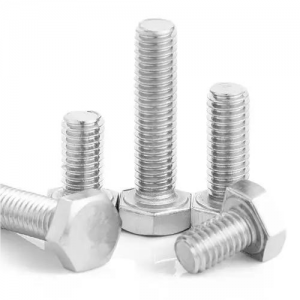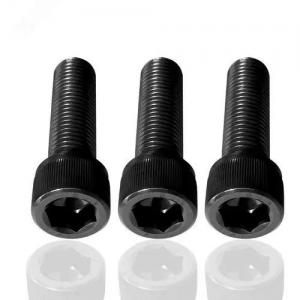 1. Insufficient tightening
1. Insufficient tightening
Undertightened or falsely tightenedboltsare inherently insufficient preload, and if they become loose again, the joint will not have enough clamping force to secure the various parts together. This may cause lateral sliding between two parts, causing unnecessary shear stress on the bolts, which may ultimately lead to bolt fracture.Bolts are widely used in industrial production and manufacturing, but if they become loose or break, the consequences will be unimaginable.Many people believe that bolt breakage must be due to poor quality or insufficient tensile strength, but you may not think that these are the true reasons for bolt breakage.
2. Vibration
Experiments on bolted connections under vibration have shown that many small ‘lateral’ movements cause the two parts of the connection to move towards each other, and at the same time, the bolt head or nut and the connected part alsomove.
3. Impact
When the large impact load exceeds the pre tightening of the bolt, the frictional force causes sliding.Dynamic or alternating loads from machinery, generators, wind turbines, etc. can cause mechanical shock – the impact force applied to bolts or joints – to cause relative sliding ofbolts.
4. Shim creep and thermal expansion
Many bolted joints include a thin and softwasherbetween the bolt head and the joint surface to seal the joint and foreseet gas or liquid leakage. The washer itself also acts as aspring, rebounding under the pressure of the bolt and joint surface.Over time, especially when approaching high temperatures or corrosive chemicals, the gasket may “creep”, which means it loses elasticity and leads to a loss of clamping force.If the materials of the bolts and joints are different, excessive temperature differences caused by rapid environmental changes or industrial cycling processes can lead to rapid expansion or contraction of the bolt material, which may cause theboltsto loosen.
5. Embedding
Engineers who design and develop bolt tension allow for a running in period, resulting in a certain loss of pre tightening force. During this period, the tightness of the bolts will relax.
This relaxation is caused by the embedding between bolt heads and/ornuts,threads, and the mating surfaces of the connected parts, and can occur in both soft materials (such as composite materials) and hard polished metals.
If the joint design is improper, or if the bolt does not reach the specified tension at the beginning, the insertion of the joint may result in a loss of clamping force and the required minimum clamping force cannot be achieved.
OUR WEB:/,If you want any products,pleasecontact us.
Post time: Jul-31-2023
